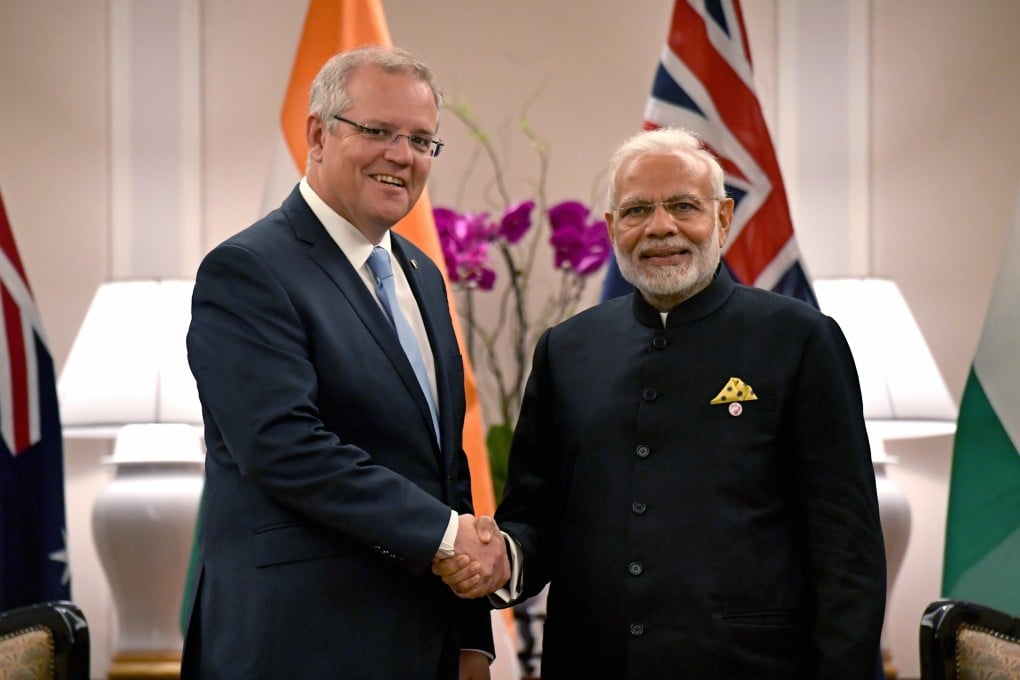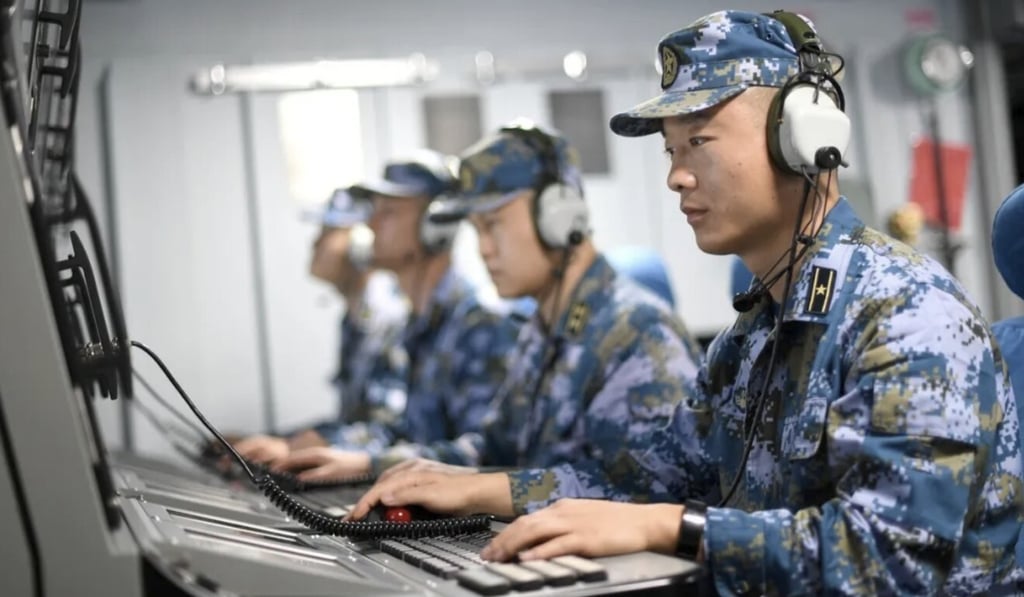Advertisement
Australia, India seek closer ties amid shared wariness over China’s rise
- Scott Morrison and Narendra Modi will hold a virtual summit on Thursday and are expected to sign a deal on reciprocal access to military bases
- It comes at a time of heightened anxiety, with escalating trade tensions between Canberra and Beijing and tense India-China military stand-offs
Reading Time:4 minutes
Why you can trust SCMP

Australian Prime Minister Scott Morrison and Indian Prime Minister Narendra Modi will seek closer ties on defence, trade and education during their first “virtual summit” on Thursday, amid growing wariness in both countries of China’s increasingly assertive foreign policy.
The two are expected to sign a deal granting reciprocal access to military bases for logistics support and agreements to develop new supply chains in key industries, such as rare earths and minerals, as well as discuss cooperation in managing the coronavirus pandemic, education and maritime resources.
Morrison is also likely to reiterate Canberra’s desire to join the annual Malabar naval exercises involving the US and Japan, which New Delhi has so far resisted out of suspected deference to Beijing.
Advertisement
The Australian prime minister, who cancelled his inaugural trip to India in January amid the bush fire crisis at home, said on Sunday the two “like-minded democracies and natural strategic partners” believed strong ties were key to a “more open, prosperous and inclusive Indo-Pacific” – thought to be a veiled reference to Canberra and New Delhi’s shared suspicions of Beijing’s growing maritime ambitions.

Advertisement
The signing of the headline Mutual Logistics Support Agreement during the summit would “allow Australian and Indian ships to refuel and replenish at each other’s ports, making joint exercises or even patrols much easier”, said Ian Hall, an academic fellow at the University of Melbourne’s Australia India Institute.
Advertisement
Select Voice
Choose your listening speed
Get through articles 2x faster
1.25x
250 WPM
Slow
Average
Fast
1.25x